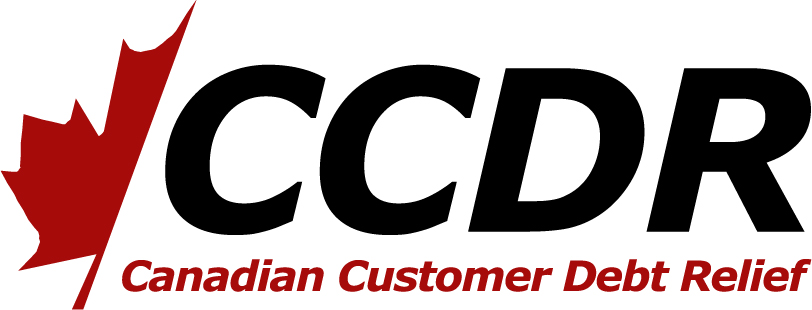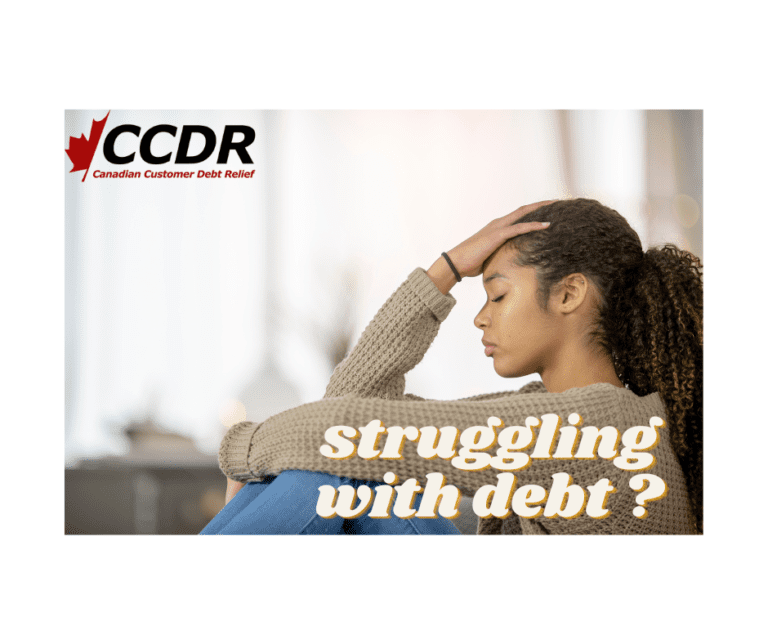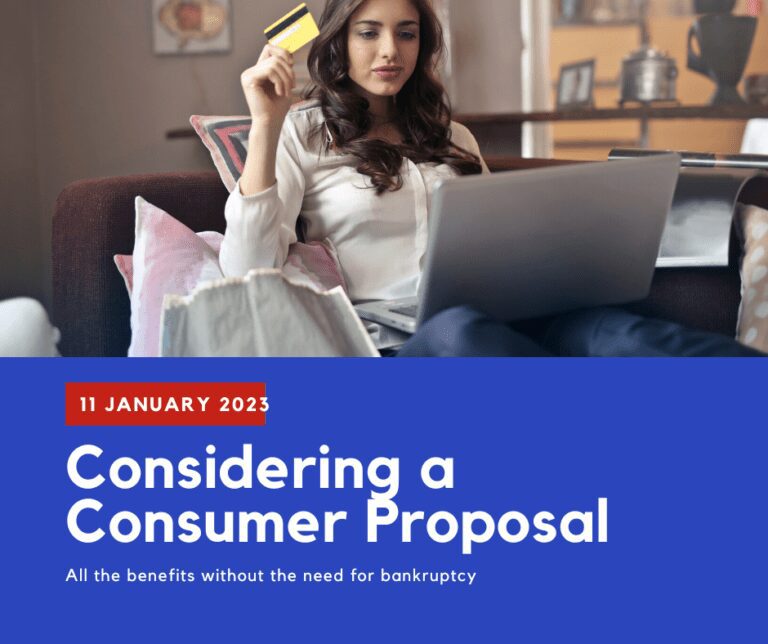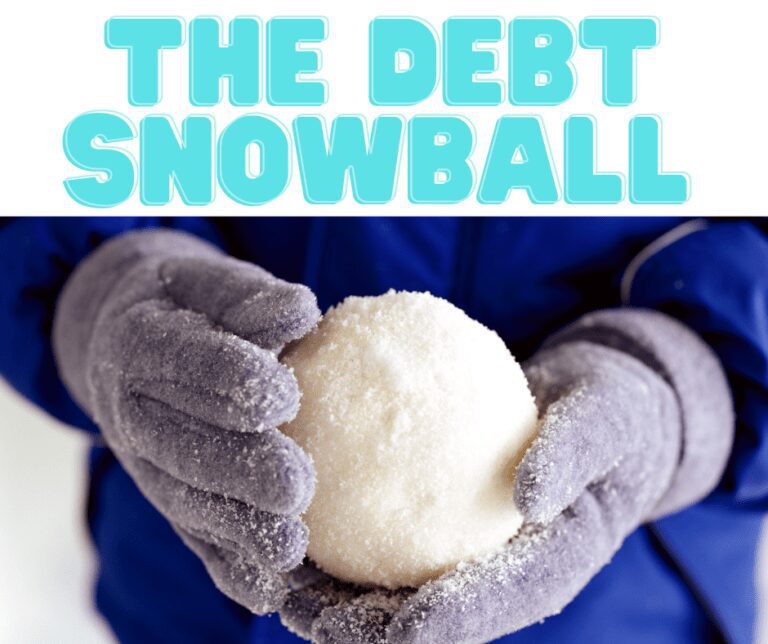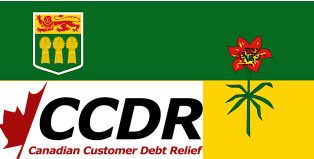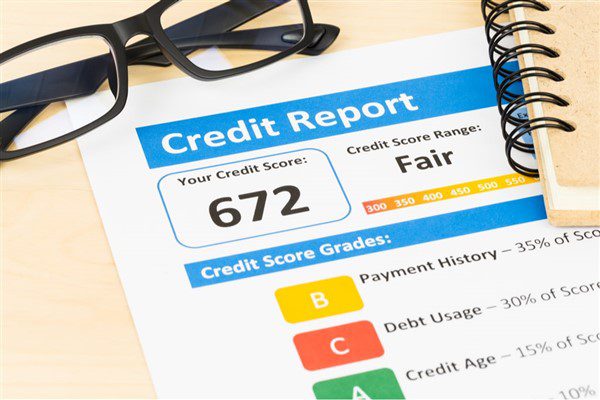Debt Relief Options In Canada
Debt Doldrums in Canada and How Canadian Customer Debt Relief can help
Debt Doldrums in Canada and How Canadian Customer Debt Relief can help
Canada is currently facing a significant challenge when it comes to consumer debt. Many Canadians find themselves caught in a cycle of debt, struggling to make ends meet and overcome their financial burdens. This article aims to shed light on the state of debt in Canada and highlight how Canadian Customer Debt Relief can provide much-needed assistance to those in need.
The State of Debt in Canada
In recent years, consumer debt levels in Canada have been steadily rising. According to the Bank of Canada, household debt reached a record high in 2022, surpassing $2.4 trillion. This staggering figure indicates that many Canadians live beyond their means and rely heavily on credit to finance their lifestyles.
Several factors contribute to the increasing debt burden faced by Canadians. One of the main culprits is the easy availability of credit, with credit cards and lines of credit readily accessible to consumers. Low-interest rates and enticing promotional offers often lure individuals into taking on more debt than they can handle.
The Impact of Debt on Canadian Consumers
The burden of debt has far-reaching consequences for Canadian consumers. Financial stress from overwhelming debt can affect individuals’ mental health and well-being. The constant worry about making monthly payments and the fear of falling behind can lead to anxiety, depression, and sleep disturbances.
Moreover, excessive debt limits consumers’ purchasing power and financial flexibility. High monthly debt payments eat into disposable income, leaving individuals with less money for essential expenses, savings, and investments. This can hinder their ability to achieve important life goals, such as homeownership or funding their children’s education.
Canadian Customer Debt Relief: How It Works
Canadian Customer Debt Relief is a reputable debt relief program designed to assist Canadians in overcoming their debt challenges. The program follows a structured process to provide effective and personalized debt relief solutions.
The first step in Canadian Customer Debt Relief is thoroughly assessing the individual’s financial situation. This involves evaluating their income, expenses, assets, and liabilities to understand their overall financial health comprehensively.
Based on this assessment, Canadian Customer Debt Relief develops a customized debt relief plan tailored to the individual’s needs and goals. This plan may involve a combination of debt-help strategies.
Canadian Customer Debt Relief provides ongoing support and guidance throughout the debt relief journey. Their team of financial experts offers advice on budgeting, money management, and improving credit scores. They aim to empower individuals with the necessary tools and knowledge to regain control of their finances and maintain a debt-free future.
Benefits of Canadian Customer Debt Relief
Engaging in a Canadian Customer Debt Relief program offers several benefits for individuals struggling with debt. Some of the key advantages include:
- Lower interest rates: Canadian Customer Debt Relief can secure 0% interest rates, reducing the overall cost of debt repayment.
- Reduced monthly payments: Through our debt help program, individuals can lower their monthly payments, making them more affordable and manageable within their budget.
- Consolidated debt management: Combining multiple debts into a single debt simplifies repayment. Instead of juggling various due dates and payment amounts, individuals only need to focus on a single monthly payment.
- Improved credit score: Completing a Canadian Customer Debt Relief program can improve an individual’s credit score. By consistently making timely payments and reducing debt, individuals demonstrate responsible financial behavior to credit agencies.
Conclusion
The escalating debt levels in Canada have put many individuals in challenging financial situations. However, Canadian Customer Debt Relief offers hope for those struggling with overwhelming debt. By providing personalized debt relief solutions, Canadian Customer Debt Relief aims to alleviate financial burdens and help individuals regain control of their finances.
Canadian Customer Debt Relief can tailor a customized plan that addresses their needs by assessing the individual’s financial situation. This personalized approach ensures that the debt relief strategy aligns with the individual’s goals and financial capabilities.
One of the primary advantages of Canadian Customer Debt Relief is 0% interest rates. The program secures a 0% interest rate, minimizing the overall cost of debt repayment. This can significantly ease the financial strain on individuals and expedite the path to debt freedom.
Additionally, Canadian Customer Debt Relief aims to reduce monthly payments, making them more manageable within the individual’s budget. By consolidating multiple debts into a single manageable payment, individuals can experience immediate relief and regain control over their financial obligations.
Consolidating debts into a single payment simplifies repayment and helps individuals stay organized and on top of their financial commitments. Instead of dealing with multiple due dates and varying payment amounts, individuals can focus on a single monthly payment, streamlining their debt management.
Another notable benefit of engaging in Canadian Customer Debt Relief is the potential for improving one’s credit score. By completing the debt relief program and consistently making timely payments, individuals can demonstrate responsible financial behavior to credit agencies. Over time, this can lead to an improved credit score, opening doors to better economic opportunities in the future.
In conclusion, the debt doldrums in Canada have created significant financial challenges for many individuals. However, Canadian Customer Debt Relief offers a beacon of hope, providing tailored debt relief solutions to help Canadians overcome their debt burdens.
FAQs
1. How long does completing a Canadian Customer Debt Relief program take? The duration of a Canadian Customer Debt Relief program varies depending on the individual’s financial situation and the selected debt relief strategies. It can take several months to a few years to complete the program successfully.
2. Will participating in a debt relief program affect my credit score? Engaging in a debt relief program may initially slightly impact your credit score. However, as you consistently make payments and reduce your debt through the program, your credit score has the potential to improve over time.
3. Can I still use credit cards while enrolled in a Canadian Customer Debt Relief program? Refraining from using credit cards while enrolled in a debt relief program is generally advisable. Limiting new credit usage allows you to repay your debts and improve your financial situation.
4. Will I be debt-free after completing a Canadian Customer Debt Relief program? Completing The Canadian Customer Debt Relief program will provide a pathway to becoming debt-free. However, it is essential to maintain responsible financial habits and avoid accumulating new debt after the program’s completion.
5. How do I get started with Canadian Customer Debt Relief? To get started with Canadian Customer Debt Relief, visit their website and provide the necessary information for a consultation. Their team will assess your financial situation and guide you through finding the most suitable debt relief solution for your needs.
In conclusion, Canadian Customer Debt Relief offers a comprehensive approach to tackling debt in Canada. Individuals can find relief from financial burdens by accessing personalized debt relief solutions and working towards a debt-free future. Remember, there is hope for a brighter financial future, and Canadian Customer Debt Relief is here to assist you on your journey to financial freedom.
If you’re struggling with debt
If you’re struggling with debt, it can be overwhelming and stressful to try to figure out how to get back on track. One of the best things you can do in this situation is to reach out to a professional for help. Here are a few reasons why:
- Experience and expertise: A professional debt counselor or financial advisor has the experience and expertise to help you understand your options and develop a plan to get out of debt. They can help you identify the root cause of your debt, such as overspending or unexpected expenses, and provide you with strategies to overcome it.
- Customized solutions: Every person’s financial situation is unique, and a professional can help you develop a customized plan that addresses your specific needs and goals. This may include negotiating with creditors, consolidating your debt, or creating a budget.
- Access to resources: A professional has access to a wide range of resources, including financial tools and budgeting software, that can help you better manage your money and get out of debt. They can also help you understand your credit report and score, and provide you with tips on how to improve it.
- Stress relief: Dealing with debt can be incredibly stressful. When you work with a professional, you can feel reassured knowing that you have someone on your side who is working to help you get back on track.
- Avoiding scam: It’s important to be aware that there are many companies that claim to be able to help you with your debt but are actually scams. A professional debt counselor or financial advisor can help you navigate these options and avoid falling victim to a scam.
Reaching out to a professional for help with your debt is an important step in getting back on track and regaining control of your finances. With their experience, expertise, and access to resources, they can help you develop a customized plan that addresses your unique needs and goals, and provide you with the support and guidance you need to get out of debt.
Considering a Consumer Proposal
A consumer proposal is a legal process that allows individuals who are struggling with debt to propose a repayment plan to their creditors. It is an alternative to bankruptcy and can be a useful tool for those who want to avoid the negative consequences of bankruptcy, such as losing assets or damaging their credit score.
When considering a consumer proposal, it’s important to understand that it is a binding agreement between the individual and their creditors. Under the proposal, the individual agrees to repay a portion of their debts over a period of time, typically up to five years. In exchange, the creditors agree to waive the remaining portion of the debt.
One of the main benefits of a consumer proposal is that it can significantly reduce the amount of debt an individual owes. In most cases, the individual will only have to repay a portion of their debts, which can make it more manageable to repay. Additionally, interest charges on the debt are usually stopped once the proposal is accepted, which can help the individual save money in the long run.
Another benefit of a consumer proposal is that it can protect assets. Unlike bankruptcy, a consumer proposal allows individuals to keep their assets, such as their home or car, while they repay their debts. Additionally, a consumer proposal will not have as much of an impact on an individual’s credit score as a bankruptcy would.
It’s important to note that a consumer proposal requires the services of a licensed insolvency trustee (LIT) who will review the individual’s financial situation, assets and liabilities and help to prepare the proposal to the creditors. The LIT will also act as a mediator between the individual and their creditors during the process.
Before considering a consumer proposal, it’s important to fully understand the process and the consequences. It’s crucial to work with a reputable LIT who will explain all the details of the process and help the individual to make an informed decision. Additionally, it is important to understand that a consumer proposal will be reflected on an individual’s credit score for up to three years after the completion of the proposal.
Overall, a consumer proposal can be a useful tool for individuals who are struggling with debt. It can significantly reduce the amount of debt an individual owes, protect assets and not have as much of an impact on credit score as a bankruptcy. However, it is important to fully understand the process and work with a reputable LIT to make an informed decision.
The Debt Snowball Method
The debt snowball method is a popular strategy for paying off credit card debt and other forms of consumer debt. The basic idea behind the debt snowball method is to pay off your debts in order of smallest to largest, regardless of the interest rate. The theory is that by paying off the smallest debts first, you will be able to quickly see progress and gain momentum, which will help you stay motivated to continue paying off your debts.
Here is how you can accomplish the debt snowball method:
- List all of your debts: Make a list of all of your debts, including the creditor, the balance, and the minimum payment.
- Order the debts by balance: Arrange your debts by balance, starting with the smallest and working your way up to the largest.
- Make minimum payments: Make the minimum payment on all of your debts except for the one with the smallest balance.
- Attack the smallest debt: Apply as much extra money as possible towards the debt with the smallest balance. For example, if the minimum payment is $50 and you can afford to pay $100, apply the extra $50 towards that debt.
- Repeat the process: Once you have paid off the debt with the smallest balance, take the extra money that you were applying to that debt and apply it to the next smallest debt, and so on. As you pay off each debt, you will be freeing up more money to put towards the remaining debts, allowing you to make larger payments and pay them off faster.
- Track your progress: Keep track of your progress as you pay off each debt, and celebrate your wins along the way. This will give you motivation to keep going and stay committed to the process.
An important thing to keep in mind is that the debt snowball method will not necessarily save you the most money in interest charges, because it doesn’t focus on paying the high-interest debt first. However, the psychological benefit of seeing small debts being paid off may help you stay on track, and the small wins will give you motivation to pay off larger debts as well.
It is important to note that if you have any trouble with paying the minimum payments or you see that it will take you a very long time to pay off your debts, you may want to consider reaching out to a debt relief company like ccdr.ca that can help you come up with a personalized plan to repay your debts and potentially even reduce the amount you owe.
CCDR Canadian Customer Debt Relief In Saskatchewan
CCDR.ca, or Canadian Credit Debt Relief, is a credit counselling agency that provides debt relief services to residents of Saskatchewan, Canada. The organization was founded with the goal of helping Canadians manage their debt and get back on track financially.
One of the services offered by CCDR.ca is budgeting advice. The organization’s financial advisors can help you understand your spending habits and identify areas where you may be able to cut back in order to free up more money for debt repayment. They can also provide you with tips and strategies for creating and sticking to a budget, which can be an effective way to manage your debt.
In addition to budgeting advice, CCDR.ca also offers financial education resources. These resources can help you learn more about how to manage your money effectively and make smart financial decisions. This can be especially helpful if you’re not sure how to tackle your debt or if you’re not sure where to start when it comes to creating a budget.
One of the key services offered by CCDR.ca is debt management plans. These plans can be customized to meet your specific needs and financial situation, and they can be an effective way to get your debt under control. With a debt management plan, you’ll make one monthly payment to CCDR.ca, which will then be distributed to your creditors on your behalf. This can help you get your debts paid off faster, as the organization can often negotiate lower interest rates and monthly payments with your creditors.
Overall, CCDR.ca is a reputable and reliable organization that can provide valuable assistance to Canadians who are struggling with debt. If you’re in Saskatchewan and you’re looking for ways to manage your debt, consider reaching out to CCDR.ca for help.
Eliminating Debt to Create Generational Wealth
As we all know, debt can be a major burden on our lives. It can affect us physically and mentally, as well as financially. Debt is especially burdensome for those who carry it from one generation to another. In this article, we will discuss why generational debt is such an issue and how you can eliminate it from your life.
The Bigger Picture
Debt is bad—no, let’s be more specific: debt is not good. Debt is a burden on the future, and it places an even greater burden on the next generation.
A recent study found that millennials are delaying starting families because they’re afraid of taking on debt. The same study also revealed that nearly two-thirds of millennials are saving less than they’d like to because they’re worried about their debt levels. It’s no secret that when people struggle with paying off their student loans and credit cards, their lives become consumed by money issues. And this isn’t just damaging for millennials themselves—it’s also damaging for society at large.
The Real Costs of Debt
Before you can begin to eliminate debt, it’s important to identify what kind of debt you have and where it comes from. There are many different kinds of debt, including student loans, mortgages and credit card debt.
Each type of debt has its own characteristics that make it unique from the others. For example:
- Student loans typically don’t come with interest rates (although there are some exceptions) but require monthly payments until the balance is paid off in full—and usually for a long time after graduation (upwards of 20 years).
- Mortgages typically have low initial interest rates but often include balloon payments toward the end that increase interest costs significantly over time (sometimes as much as 50%!).
- Credit card balances should never exceed 30% or so of your annual income because if they do, then paying them off will likely take years—if not decades!
Why Don’t People Eliminate Debt?
Debt is a major issue among Canadians. In fact, the average household carries nearly $20,000 in credit card debt alone. Because of this, it’s important to understand the reasons why people get into debt and why they stay there.
First, debt is easy to get into. You can see it if you look at your monthly bank statement or go through your checkbook; however, most people don’t look at these things regularly because they don’t want to face their financial reality. Instead of seeing their money going out as quickly as it comes in (which should be alarming), most people act as though they have more money than they actually do—even though they really don’t! This leads us into our second point:
Second, staying out of debt isn’t always easy because society tells us that we need more than we have; thus, it becomes easier for us to spend than save our money for an uncertain future. Of course there are some benefits associated with having more stuff around us—we feel better about ourselves when we own nice things like a car or house—but these things aren’t necessary for happiness! What matters most is being fiscally responsible with one’s finances so that one can maintain peace of mind throughout life rather than worry about what tomorrow might bring due to lack thereof planning today…and then tomorrow arrives but nothing changes because it never does unless someone makes changes first!
How to Get Started
Getting started with your personal debt elimination plan can be as simple as recognizing why you’re in debt and what you want to achieve. If your goal is to get out of debt, then make sure that’s clear from the beginning.
Once you have a good idea about where you’re headed, it’s time to make a plan. You should have an end goal in mind—and ideally that goal will be “Pay off all my debts!” But how do you get there? Begin by looking at the big picture: What do your finances look like right now? How much money are you spending each month on bills and other expenses? Are there any recurring payments that could be reduced or eliminated altogether (like cable or car insurance)? What are your monthly income sources and how much do they add up per month after taxes are taken out (and assuming no additional income).
Next comes the fun part! Think of ways that money can flow into each category: Where do my savings come from right now? What about my credit card balance—how much does it cost me every month in interest payments alone? Can I put any extra funds toward paying off this balance faster than usual without sacrificing essential financial needs such as food and housing costs.
Start Small
The first step to eliminating debt is to start small. When you’re just starting, focus on paying off the smallest debt you have. This can be a credit card with a $500 balance, or it could be your student loans or mortgage—whatever is easiest for you to pay off. The more money that’s owed on an account, the better it will feel when it’s finally cleared out. Paying off your biggest debt will also give you significant savings in interest and time by putting all of those payments toward one debt instead of bouncing back and forth among several different ones. The more money saved from interest payments and applied toward each individual loan payment means more money available for investment once all debts are paid off!
How to Stay Motivated
The biggest challenge facing any debt-elimination effort is motivation. When you’re deeply in debt, it’s easy to get down on yourself and feel hopeless about the situation. But if you’re motivated enough, there are ways to stay on track.
Here are some strategies for staying motivated:
- Focus on the positive—the fact that you have a plan and are taking action toward your goal can be very motivating in itself!
- Make a plan, then stick to it—you’ll have more motivation if you know exactly what needs to be done next.
- Don’t let yourself get distracted by other things—if something comes up that will take away from your time spent working toward eliminating debt, put it off until later (or delegate). For example: if someone asks me out for dinner or drinks while I’m trying not too spend money on food or booze (because then I’d need even more money), I’ll usually say no because this would make my goal harder for myself
Start with a Plan and a Purpose
To begin your debt repayment journey, start by creating a plan.
- Create a budget and stick to it. Make sure you have an emergency fund in place so that if something unexpected comes up, you’ll have the funds to cover it.
- Create an actual list of priorities—not just for yourself but for your family as well. Some things on that list might include paying off student loans or mortgages, owning a home free and clear, having good insurance coverage in place, saving up enough money for retirement at age 65 (or whatever age is relevant to your situation), or being able to afford future educational expenses for your children or grandchildren.
- Once you’ve created these lists and goals, start working toward them! Write down how much money needs to come in each month and make sure the amount matches what needs are coming out each month—including any debts that need paying down. If there’s not enough coming in to cover everything needed each month with just income from one person’s paycheck then look at cutting expenses as we’ll touch more on later here; however this could also mean getting a second job temporarily until things get back on track financially again which isn’t always easy! But most important here though is not becoming discouraged when things aren’t going according exactly as planned because if anything happens along life’s journey then there will always be bumps along the road ahead but don’t lose hope because God has big plans ahead for those who believe through faith alone without works themselves first proving their faithfulness like Abraham did before us all today too!
Paying off debt is one of the best things you can do for your future, your family’s future, and your community’s future.
Eliminating debt is one of the best things you can do for your future, your family’s future, and your community’s future.
Debt can be a drag on your finances. If you carry a credit card balance or student loan debt then it will be difficult to save money – even if you make more than enough money to pay off what you owe each month. It doesn’t matter if someone else gave you the money (like an employer) or if it was earned through hard work (like from selling products); either way an individual must repay their debts without fail. This means that every dollar spent paying interest on loans will not be available for other expenses like food or clothing—let alone contributing towards retirement savings or starting an investment account!
If left untreated over time this problem can get worse too as interest rates continue to compound: The more time passes between when payments are made versus when they were first borrowed; then compounded again each month thereafter; compounded again with every new payment cycle until finally becoming unmanageable over time due to exponential growth due…
The bottom line is that debt isn’t just about you. It’s about the future of your family, your community and your generation. If we all take action to eliminate debt, we can build a better world for ourselves—and our children. It’s time to start paying off those bills!
Why it is Important to Avoid Debt
Debt is a necessary part of life. You need to borrow money in order to buy a house, start a business or go on vacation. However, it’s important that you avoid debt whenever possible. There are many reasons why you should avoid becoming too dependent on debt and some of them include:
Debt does not go away by itself
Debt is a long-term problem, and it won’t just go away.
It’s important to understand that debt doesn’t disappear on its own. There are many people who think they can just ignore their debt and it will eventually go away, but this isn’t true at all! The only way for your debt to truly disappear is if you take action. If you don’t take action, then your situation will continue to get worse until you start having problems with your finances and other areas of life as well.
Debt affects more than just your finances; it also affects your emotions.
Remember: Debt isn’t just a financial problem; it also has emotional consequences as well. As far as mental health goes, dealing with debt can be very stressful and exhausting—and sometimes even downright depressing! However if one approaches their situation with positivity instead of negativity (i.e., says something like “I’m going through a tough time right now but I know things will turn around soon”) then they’ll end up feeling much better about themselves by staying positive despite all odds stacked against them today or tomorrow…or whenever else they might encounter problems caused by someone else’s mistake (in this case being responsible enough not only pay off all debts owed but also never get into any kind of trouble again).
Debt can lead to bankruptcy and foreclosure.
While it may sound extreme, bankruptcy and foreclosure are a reality for many Canadians. Bankruptcy is a legal process that allows you to deal with debt, while foreclosure is the legal process of dealing with debt by selling your house to pay off any outstanding loans.
Regardless of the type of debt you have, both processes can be avoided if you are proactive in taking care of things before they get out of hand.
Debt carries hidden fees that you may not be aware of.
Hidden fees are charges that you didn’t know about at the time of signing. Hidden fees can be charged by lenders or credit card companies and can include interest rates, transaction fees, annual fees and late payment penalties. If you are not aware of these fees it may be difficult to budget for them or plan ways to avoid paying them in the future.
In addition to being a financial burden, debt can negatively affect your emotional well-being.
In addition to being a financial burden, debt can negatively affect your emotional well-being.
You may not realize that your finances are making you anxious, depressed or even suicidal until it’s too late. Be aware of the following signs:
- You feel like you’re drowning in debt. If this is how you feel, it may be time to seek help from someone who can assist you with gaining control over your finances once again.
- Your relationships are suffering because of money issues. For example, if you are unable to pay for necessities such as rent and utilities without asking friends or family members for help, it could lead them to resent having to take care of an adult who is “wasting money on frivolous things.”
Problems with debt can cause severe financial problems.
In addition to the obvious costs incurred from paying interest on a debt, there is a host of other problems that can arise from taking on debt. For example, having too much debt can affect your credit score and ability to get a loan. If you have too many loans or high balances on your accounts, it can make it difficult for lenders to determine whether or not they should trust you with a new loan or credit card. Even worse, if you have no money in savings and few assets besides whatever assets are already secured by mortgages or car loans (like a house or car), then there may be nothing available for lenders to take if they need to foreclose on their collateralized property.
In addition to potentially hurting your ability to purchase property or buy things like cars in the future (due to negative equity), taking out too much debt could also prevent people from buying those important things now due simply because they don’t have enough income left over after paying bills each month! This means that even though someone might really want something nice like an iPhone X but know full well that making payments every month will mean less money left over at month’s end so only having enough money after all bills are paid each month – then maybe buying one isn’t worth doing at this point because then where does one find funds for food/rent/etcetera?”
Avoiding debt is so important because it causes emotional pain and financial hardship.
So, why is it important to avoid debt? The answer is simple: debt can cause emotional pain and financial hardship.
When you are in a lot of debt, or when you have a high credit card balance, it can be stressful. You might become anxious about not being able to make ends meet each month and worry about where the money for your bills is going to come from.
This stress can lead to depression if it continues for too long. It’s also common for people who are struggling financially due to their debt problems not only feel stressed but also anxious and depressed as well as angry with themselves or others around them who caused them these problems like their spouse or close friends/family members who aren’t helping understand what they feel like when they see each other at work because they know how much money we owe every month which makes things worse because there’s nothing anyone else could do right now except let me know that everything’s going ok?”
Conclusion
We hope this article has helped you understand why it is important not to get into debt. If you are suffering from debt, we would like to encourage you to seek help from a financial advisor or credit counselor. They will be able to help you with your situation and make sure that your future finances stay on track!
Why Being Debt Free is Good
Debt is a burden.
Debt is a burden. It’s a burden to your future. It’s a burden to your family. Debt is also a financial burden that can keep you from accomplishing goals and dreams or even basic necessities like paying bills, saving money and providing for yourself and loved ones
It’s easy to forget this when we’re caught up in our day-to-day lives with all the responsibilities of adulthood: work, relationships, homes and children… but debt should be something we think about often because it could hold us back from reaching our full potential in life
Debt is a hole.
It’s not something that you can fill with money or work, and it will keep growing until you figure out how to deal with it.
If you have debt, there are some things that will help you dig out of it:
Debt is a trap.
You can’t get out of debt without changing your spending habits. You can’t get out of debt without changing your income. And you can’t get out of debt without changing your attitude towards money and wealth. If you want to be free from the shackles that are keeping you down, then you need to start working on all three areas at once!
Debt can be like being in prison, you’ve earned some and didn’t earn some.
Debt is like being in prison. It’s a trap, a burden that holds you back from doing what you want with your life.
If you’re in debt, it can feel like there is no way out and that you will never be free of it. But the truth is there are ways to get out of debt, even if they require sacrifice and hard work.
Debt takes away our freedom of choice.
Debt is often a burden. A debt can constrain your choices, making them much more limited. You don’t have the option to do something that you are passionate about because it doesn’t pay enough or because it will take too long for the return on investment. That’s why many people choose to go into debt instead of pursuing what they really want in life: a job that they love doing, traveling with their family, or taking care of their health and body through exercise and dieting.
Debt traps us into working harder at jobs we don’t like just to maintain our living standards which were created by overusing credit cards during good times when we were under the impression that no one would ever go bankrupt again! We end up spending more time working than with family members or friends so our lives become boring and meaningless; even worse yet we may feel trapped at work due to an ugly divorce settlement where half of everything has been given away (including homes).
Debt robs us of our dreams.
Being in debt robs us of our dreams. We can’t afford to do the things we want to do, like travel the world and pay off the house, because we have bills to pay each month. If you are struggling with debt and you want to start saving for retirement or your child’s college education, but don’t know where the money will come from—you need a plan so that you can finally get out of debt!
Being in debt makes it difficult for us to live our lives as fully as possible. It weighs down on us every day when we think about how much money we owe other people and how much interest there is on those debts.
We are fighting debt to pass on the legacy of financial freedom to our children.
In the last few decades, teaching kids about money has become more important than ever.
As a matter of fact, it’s harder today than ever before to raise children who are financially literate and responsible. The world of personal finance is far from straightforward and simple anymore. The challenges we face as parents are real: saving for our kids’ education or retirement; ensuring they don’t get lost in the shuffle of debt; helping them cultivate good money habits and avoid bad ones; teaching them how to manage their own finances when they’re adults…the list goes on.
These days, young people have access to so many resources that help them understand financial concepts—but these resources can also be confusing or misleading if we don’t guide our children along the way with sound advice grounded in reality. And while we do have some tools at our disposal (like this page!), there’s no substitute for having conversations with your kids directly about money matters like interest rates, compound interest rates and inflation—and then following up with more questions later on down the road when they’re older!
Conclusion
Debt is not a necessary part of life, and I am glad we are able to show others that it is possible to live without it. It may take some sacrifice, but in the long run it is so worth it!
Can Debt Relief Hurt Your Credit?
Managing debt is not the same as managing your credit. Debt negotiation, debt consolidation, bankruptcy and refinancing a loan all involve some form of change to your credit score. However, these changes don’t always have negative effects on your credit report. In this article, we will look at how each of these methods can affect your credit in different ways.
Debt Negotiation Can Hurt Your Credit
Debt negotiation is a way to settle debts with creditors without filing for bankruptcy. It can be a good option if you are having trouble paying your bills, and it can be a bad option if you want to keep your credit score intact.
Debt negotiations are conducted by third-party companies that work on behalf of consumers looking to reduce their debt burden. The company negotiates with the creditor and makes them an offer they cannot refuse: an amount less than what is owed, but still more than they would receive in court if they went through official proceedings (which often results in garnishment). If accepted by both sides, then everyone goes home happy.
Debt Consolidation Can Hurt Your Credit
Consolidating debt can be a great way to pay off your debt and get a fresh start, but it’s not the only option. Before you consider debt consolidation, make sure that you’ve exhausted all other options. If you have good credit, it might be better for you to use a personal loan or line of credit instead of consolidating your debts into one loan with higher interest rates.
When considering consolidation, make sure that you understand what will happen if you don’t repay the money in full on time. You should also know what kinds of fees might come along with this type of loan before committing yourself to an agreement like this.
Bankruptcy Can Hurt Your Credit
Bankruptcy is a legal action that can be taken against you in the event of financial hardship. It’s rare for debt relief to hurt your credit, but bankruptcy certainly can—and it can stay on your credit report for up to 10 years after being filed!
Bankruptcy can make it harder to get a loan or an apartment and can make it harder to get a job. The impact of bankruptcy is lessened if you have been diligent about paying off other debts during the period between filing for bankruptcy and having it discharged, but even so many landlords will still check a prospective tenant’s credit history before deciding whether or not they want them as a tenant (and some landlords may not rent at all).
Refinancing a Loan May Hurt Your Credit
If you are in the market for a new loan and are considering refinancing your debt, there are several things to consider. Do not assume that every lender will report their loans to the credit bureaus or that they will report them in an accurate manner. While some lenders do report their loans according to guidelines, many do not. Some lenders may report for only a short period of time, while others may never report at all!
These factors can be important when it comes down to getting approved for another loan or financing option because most financial institutions take into account your overall credit score when determining whether or not they want someone as their customer. If you have gaps in your history where no one knows what has happened over those years, this could cause problems with obtaining additional financing options later on down the road since having no information about how well managed your finances were during those periods gives lenders little assurance about how good of a risk you actually may be worth taking on board as one of their clients.”
Managing debt is not the same as managing your credit.
- Credit is a record of your financial history. It shows how you’ve managed credit cards, loans and other debt over time. Your credit score is a number that represents your creditworthiness as determined by the information in your credit report.
- A good credit score can save you money on interest rates when you borrow money (for example, to buy a car or house). A low or bad credit score may make it difficult for you to get loans or credit cards at reasonable rates without paying higher interest rates than someone with better-than-average scores.
Conclusion
Debt relief is important when you’re struggling to manage high debt. However, it can also affect your credit score. This is why it’s important to consider all of the options available before deciding on a debt relief option that will help get your finances back on track.
Ensure your dealing with a Legitimate Debt Help Company
The debt help industry is one of the most unregulated industries in Canada, with many companies offering services that can do more harm than good. If you’re looking for a legitimate debt help company, there are five things to look out for: BBB rated, Google Reviews, legal credentials, licensed with corporations branch and privacy policy.
BBB Rated
You can use the BBB to learn more about a company’s reputation. The Better Business Bureau is a non-profit organization that has been around for over 100 years and provides reviews of businesses in your area. The mission of the BBB is to promote trust between consumers and businesses, so it’s an ideal source for information on debt help companies.
Google Reviews
When you’re looking for reviews, you want to make sure that they’re actually from real people. There are some companies out there who pay for positive reviews, so if someone has a review that says “This company was awesome! They helped me get rid of my debts and now I have more money in my pocket than ever before!” it might be suspect.
If a company isn’t getting many reviews (or any at all), this may indicate that their services are either not well-known or not sought after. This is something worth considering before choosing a debt help service provider as they may not provide anything above and beyond what is already provided by your existing creditors.
Legal credentials
- Make sure that the debt help company you are dealing with is licensed with the corporations branch.
- Check to see if your company has a Better Business Bureau rating, and if it does, make sure it’s an A+ or better.
- Look for a privacy policy on the company website that protects client information from being shared or sold to third parties.
Licensed with corporations branch
You can also verify whether a debt help company is legitimate by checking that they are registered with the Corporations Branch, an agency of the Government of British Columbia. The official website of this organization is https://www.ic.gc.ca/eic/site/cd-dgc.nsf/eng/home.
The Corporations Branch is a good indicator that your debt help company will treat you fairly and make sure you get what you’re owed, so always make sure that your chosen provider has been registered here before signing up for any kind of debt management program.
Privacy Policy
A privacy policy is a legal document that defines how a company will handle any personal data they may collect from you. It also outlines what information they retain, how long they keep it and who they share it with.
It’s important to have one because it gives you more control over how your personal information is used by a company – as well as protection in case anything goes wrong.
Conclusion
In the end, it’s important to remember that there are many companies out there claiming to help with debt problems. It is up to you as an individual to ensure that they are legitimate and won’t take your hard earned money without return. If you’re unsure about any company then please do research before making any decisions!
